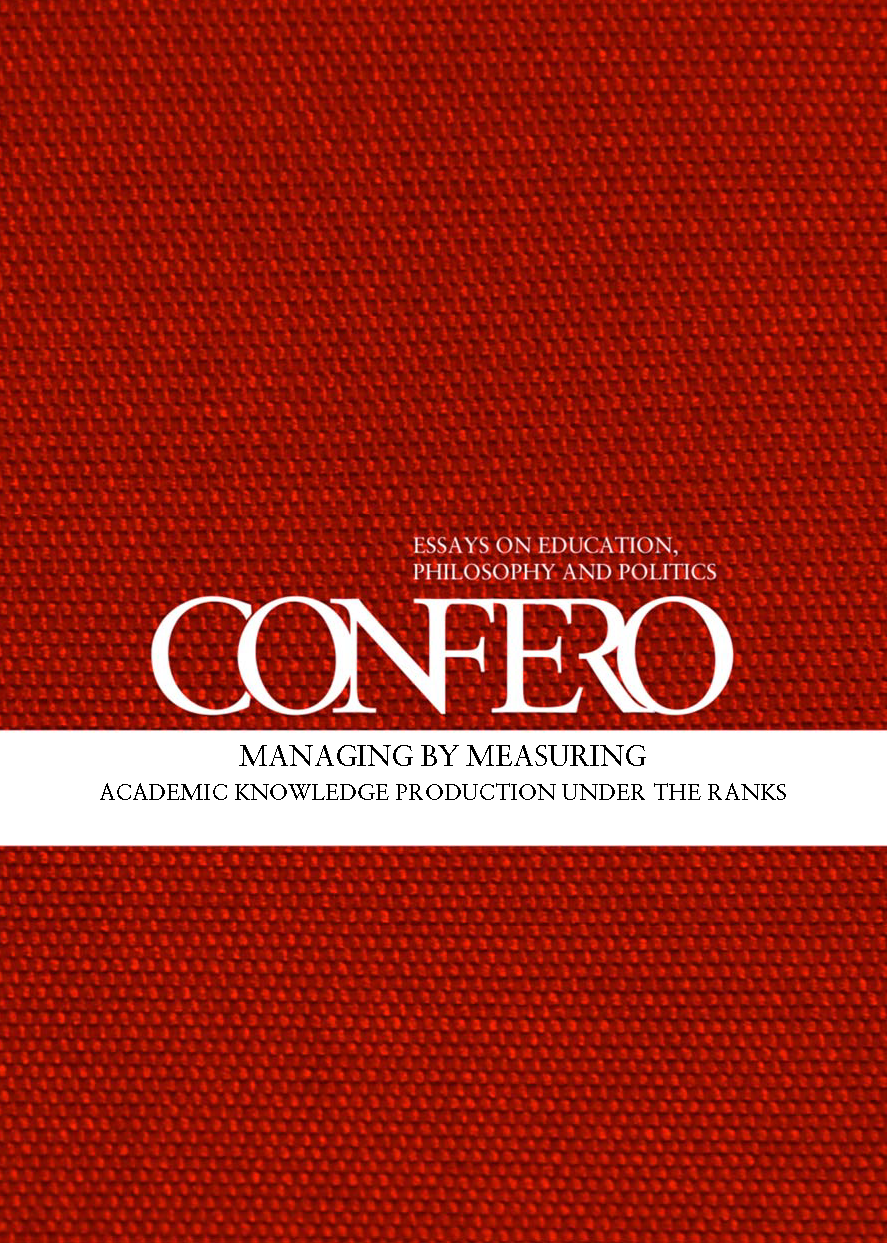Managing your assets in the publication economy
DOI:
https://doi.org/10.3384/confero13v1130117Abstract
The issue this article aims to address is the fact that publications may nowadays be used to assess impact and quality of research in ways academics may not be fully aware of. During recent years, scholarly publications have gained in importance, not primarily as the traditional vehicle for the dissemination of new scientific findings, but as a foundation for assessing the production and impact of organizations, research groups and individual researchers. This means that publications as artefacts per se are starting to play a new important role in the scientific community and that researchers need to be aware of how publication and citation counts are being used to assess their research and the outreach, impact and reputation of their mother organization. University rankings, for instance, often have some parameters based on the publishing of the ranked institution. This article is thus not about scientific writing as such; it focuses on what happens to your publication after the publishing has taken place and on aspects to take into account while planning the publishing of your article, report or book.
References
Aksnes, Dag. "A macro study of self-citation." Scientometrics, Vol. 56, no. 2, 2006, p. 235-246. doi: 10.1023/A:1021919228368.
Beall, Jeffrey. "Criteria for Determining Predatory Open-Access Publishers.", 2012. http://scholarlyoa.com/2012/08/04/criteria-for-determining-predatory-open-access-publishers/ [Retrieved 10 August 2012].
Castells, Manuel. The information age?: economy, society and culture. The rise of the network society. [2], Blackwell, 2000. ISBN: 0-631-22140-9. PMCid:1723212
Dorch, Bertil. "On the Citation Advantage of linking to data.", 2012. http://hprints.org/hprints-00714715/ [Retrieved 28 July 2012].
Elsevier. "Author Identifier - SciVerse.", 2012. http://www.info.sciverse.com/scopus/scopus-in-detail/tools/authoridentifier [Retrieved 5 August 2012].
Eysenbach, Gunther. "Citation Advantage of Open Access Articles." PLoS Biol, Vol. 4, no. 5, 2006, p. e157. doi: 10.1371/journal.pbio.0040157.
Fischer, Joern; Ritchie, Euan G. and Hanspach, Jan. "Academia’s obsession with quantity." Trends in Ecology & Evolution, Vol. 27, no. 9, 2012, p. 473-474. DOI: 10.1016/j.tree.2012.05.010.
Gentil-Beccot, Anne and Mele, Salvatore. "Citing and Reading Behaviours in High-Energy Physics. How a Community Stopped Worrying about Journals and Learned to Love Repositories.", 2012 [Manuscript]. arXiv:0906.5418.
Google. "Google Scholar Citations.", 2012. http://scholar.google.com/intl/en/scholar/citations.html [Retrieved 5 August 2012].
Hitchcock, Steve. "The effect of open access and downloads (’hits’) on citation impact: a bibliography of studies.", 2012. http://opcit.eprints.org/oacitation-biblio.html [Retrieved 25 June 2012].
Karolinska Institutet. The Bibliometrics Group’s publishing recommendations for research scientists at Karolinska Institutet., 2011. http://kib.ki.se/sites/kib.ki.se/files/FS_rekommendationer_till_publicerande_forskare_en.pdf [Retrieved 7 June 2012].
Kronman, Ulf; Gunnarsson, Magnus and Karlsson, Staffan. The bibliometric database at the Swedish Research Council - contents, methods and indicators., 2010. http://vr.se/bibliometrics [Retrieved 27 July 2012].
Larsson, Staffan. "An emerging economy of publications and citations." Nordisk Pedagogik, Vol. 29, 2009, p. 34-52.
Mendeley. "Mendeley - Free reference manager and PDF organizer.", 2012. http://www.mendeley.com/ [Retrieved 8 August 2012].
Moed, Henk. Citation Analysis in Research Evaluation. New York, Springer, 2005. ISBN: 978-1-4020-3713-9.
ResearcherID. "ResearcherID.com.", 2012. http://www.researcherid.com/ [Retrieved 5 August 2012].
Ruhvargers, Andrejs. Global University Rankings and Their Impact. European University Association, 2011. http://www.eua.be/pubs/Global_University_Rankings_and_Their_Impact.pdf [Retrieved 26 July 2012].
Science Online. "Science Online 2012: Day Two Blitz - Get Visible or Vanish.", 2012. http://www.youtube.com/watch?v=fs4mZrxl7gg&feature=youtube_gdata_player [Retrieved 30 July 2012].
Sears, J.R.L. "Data Sharing Effect on Article Citation Rate in Paleoceanography." 2011 Fall Meeting, AGU, San Francisco, Calif., 2011. http://www.agu.org/cgi-bin/wais/?tt=IN53B-1628 [Retrieved 20 June 2012].
Thomson Reuters. "Master Journal List - Thomson Reuters.", 2012. http://ip-science.thomsonreuters.com/mjl/ [Retrieved 5 August 2012].
University of Nottingham. "SHERPA/RoMEO - Publisher copyright policies & self-archiving.", 2012. http://www.sherpa.ac.uk/romeo/ [Retrieved 7 August 2012].
Downloads
Published
Issue
Section
License
Copyright (c) 2013 Ulf Kronman

This work is licensed under a Creative Commons Attribution 4.0 International License.
As Confero is an open access journal, this means that anyone who can access the Internet can freely download and read the journal. There are no commercial interests for Linköping University Electronic Press or Confero in publishing the journal.
The core idea of open access is that copyright remains with the author(s). However, we publish with the agreement of the author that if she or he decides later to publish the article elsewhere, that the publisher will be notified, prior to any acceptance, that the article has already been published by Confero.
When publishing with Confero, it is with the agreement of the author that if they make their article available elsewhere on the internet (for example, on their own website or an institutional website), that they will do so by making a link to the article as published in Confero using the Digital Object Identifier (DOI) number of the article and acknowledge in the text of the site that the article has been previously published in Confero.
As evident by the markers on our homepage, Confero falls under the Creative Commons licence abbreviated BY. This means that we allow others to use, spread and elaborate on the published articles, as long as they acknowledge who published it and where it was originally published.



